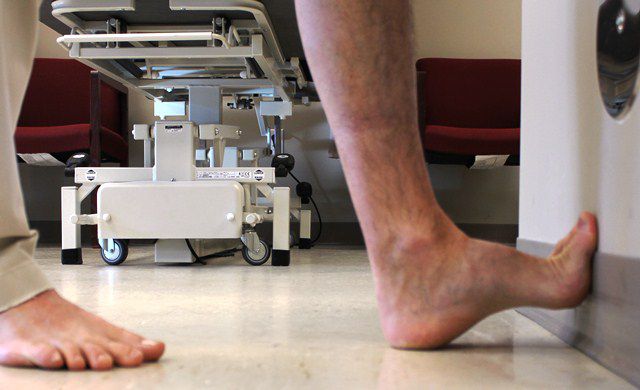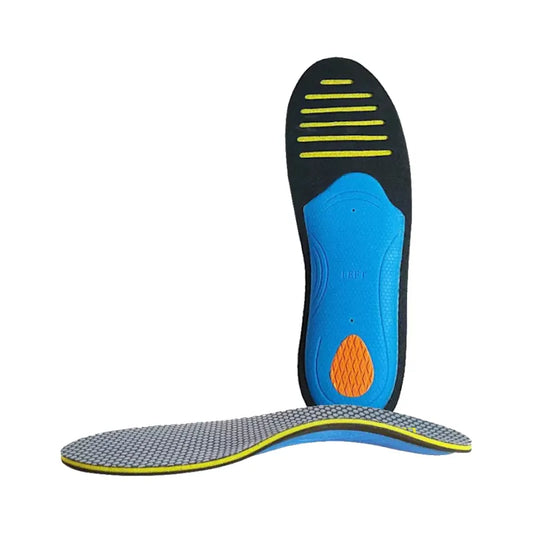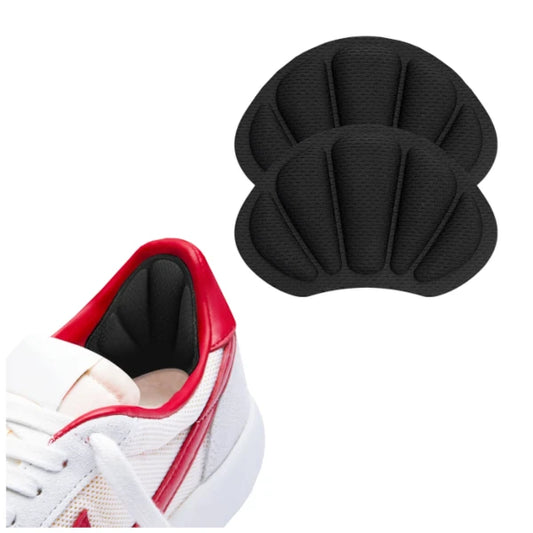
Plantar Fasciitis stretches & exercises
Share
Plantar Fascia
The plantar fascia is a tough, fibrous band that starts from the inner part of the heel bone (medial tubercle of the calcaneus) and extends forward to form the arches of the foot.
Its primary role is to provide structural support to the foot's arches and to absorb shock during weight-bearing activities such as walking and running.
Plantar Fasciitis
Plantar fasciitis is a common condition that causes heel pain in adults. The main symptom is severe pain in the surface of the foot, particularly during the first few steps taken in the morning.
The pain may also occur with prolonged standing and is sometimes accompanied by stiffness.
The pain tends to decrease or disappear with activity after the patient warms up.
However, in more severe cases, the pain may persist throughout the day and worsen toward the end of the day. The pain is described as stabbing and non-radiating.
Risk factors
- Pes planus (low arch or flat feet) or pes cavus (high arches)
- Limited ankle dorsiflexion
- discrepancy in leg length
- tightness and weakness in the gastrocnemius, soleus, Achilles tendon and intrinsic foot muscles of the foot.
- Overuse/increase in weight-bearing activities like running
- Increase in body weight
Physical Examination
During a physical examination for plantar fasciitis, the doctor will typically look for tenderness in the area of the heel bone and along the proximal plantar fascia. Increased pain may be felt during the exam when the doctor passively dorsiflexes the toes or when the patient stands on the tips of their toes.
Treatment
Before starting the rehabilitation program for plantar fasciitis, it's important to address the factors that increase the risk of developing plantar fasciitis. When treatment is started sooner after the onset of symptoms, these are more likely to resolve quickly and with conservative treatments.
Treatment options include rest, stretching, strengthening exercises, changing footwear, using arch supports or orthotics, wearing night splints, taking anti-inflammatory medication, or surgery in severe cases. You can also try wearing compression socks for easing the pain.
Generally, plantar fasciitis can be successfully treated by tailoring treatment to each individual's risk factors and preferences.
Stretching and strengthening programs are vital in treating plantar fasciitis and can help address functional risk factors, such as tightness in the gastrocnemius and soleus muscles and weakness in the muscles of the foot, improve foot biomechanics and reduce stress.
Here are a few stretching exercises you should do if you have plantar fasciitis:
- Wall stretches - Stand facing a wall, about an arm's length away. Place the front of one foot and your toes against the wall. Lean forward from your ankle, keeping your heel on the ground. Hold the stretch for 30 seconds.





Strengthening Exercises
- Towel Curls - Place a towel on the ground and put your foot on top of it. Use your toes to grip and bunch up the towel slowly. Keep your toes flat and try to create a bigger arch in your foot. Repeat the movement 10 times. To increase the challenge, you can add a weight on top of the towel.

2. Heel raises - Stand near a countertop or stable surface. Lift your heels off the ground while raising up onto your toes. Keep good posture and maintain balance. Begin with both feet and then progress to one foot as you get stronger and experience less pain.

3. Heel drops - The exercise involves raising the body weight with both feet and then lowering it slowly with the affected foot, focusing on the eccentric contraction.

4. Balance on one foot - stand on one foot and try to maintain this posture. The softer the surface you stand on, the more difficult the balance will be. Hold for 30 seconds 3 times.

These exercises may be done 3 times a day, and bilaterally, even if you only have pain in one heel.
Author Bio:

Marlene Carvalho
Certified Sports Physiotherapist of Elite and Olympic athletes; Performance Coach to racing drivers
Marlene Carvalho is a sports physiotherapist passionate about all things sports.
References
- MS;, L.L.D.J.D.E.T.Y.T. (no date) Evaluation and treatment of chronic plantar fasciitis, Foot & ankle orthopaedics. U.S. National Library of Medicine. Available at: https://pubmed.ncbi.nlm.nih.gov/35097359/ (Accessed: April 12, 2023).
- Versus arthritis (no date) Versus Arthritis. Available at: https://www.versusarthritis.org/ (Accessed: April 12, 2023).
- The physical therapy advisor (2022) The Physical Therapy Advisor | Empowering You to Reach Your Optimal Health! Available at: http://www.thePhysicalTherapyAdvisor.com/ (Accessed: April 10, 2023).
- Plantar Fasciitis Advice and Management (no date) NHS choices. NHS. Available at: https://www.ouh.nhs.uk/ (Accessed: April 12, 2023).
- Orthoinfo - patient education | American Academy of Orthopaedic Surgeons (no date). Available at: https://orthoinfo.aaos.org/globalassets/pdfs/planter-fasciitis.pdf (Accessed: April 12, 2023).






